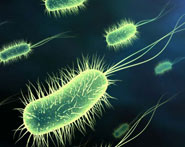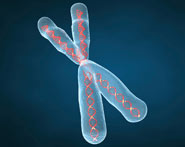


 النبات
النبات
 الحيوان
الحيوان
 الأحياء المجهرية
الأحياء المجهرية
 علم الأمراض
علم الأمراض
 التقانة الإحيائية
التقانة الإحيائية
 التقنية الحيوية المكروبية
التقنية الحيوية المكروبية
 التقنية الحياتية النانوية
التقنية الحياتية النانوية
 علم الأجنة
علم الأجنة
 الأحياء الجزيئي
الأحياء الجزيئي
 علم وظائف الأعضاء
علم وظائف الأعضاء
 الغدد
الغدد
 المضادات الحيوية
المضادات الحيوية|
Read More
Date: 2025-02-24
Date: 2025-01-04
Date: 2025-03-23
|
The first vaccines were whole viruses or bacteria (killed or attenuated), and contained antigens vital in inducing a protective immune response, similar to that produced by exposure to the target pathogen (Cunningham et al., 2016). However, these vaccines were sometimes highly immunogenic, caused adverse reactions, and could generate pathology that was close to that produced by the infection targeted by the vaccine (Cunningham et al., 2016). As a result of this, new approaches such as subunit vaccines that only contain key pathogen derived components are mainly being used for modern vaccine design. Subunit vaccines consist of one or more specific antigens of the pathogen and are produced through genetic engineering or purification methods (Wang et al., 2020). Indeed, a large number of severe acute respiratory syndrome coronavirus 2 (SARS-CoV-2) vaccines expressing only the spike protein have been developed. The spike protein (S protein) that covers the surface of SARS-CoV-2 binds to angiotensin-converting enzyme 2 receptors on the surface of human cells and mediates viral entry into the cell (Letko et al., 2020). The S protein induces neutralizing antibodies (Bisht et al., 2004; Yang et al., 2004) that are protective, making it an appropriate antigen candidate for SARS-CoV-2 vaccines.
Several factors have to be considered when selecting the appropriate candidate antigens. Antigens need to be able to stimulate innate and T-cell dependent responses, and produce a strong B-cell (antibody) response that leads to the neutralization and elimination of pathogens (Tan et al., 2016). Also, candidate antigens should be able to protect against different strains/ mutations of the same pathogen (Tan et al., 2016), so should possess sequences common to the majority of pathogen strains. Antigenic drift (minute antigenic changes caused by mutations that lead to new strains) and antigenic shift (major antigen changes that lead to a new subtype of a virus) have to be considered when selecting candidate antigens, as this enables the selection of strain-transcending vaccines (Carrat & Flahault, 2007; Tan et al., 2016).
Antigens have to be evaluated for immunogenicity in vivo, ideally using animal models of infection that mimic human disease, which can elucidate whether the vaccine-induced immune response can confer protection against infection (Brinks et al., 2011). Cell-based in vitro assays can be used to evaluate antibody function, for example, to test whether antibodies generated in vivo (e.g., in mice, rats, or rabbits) can neutralize pathogen in a cellular infection model. After suitable antigens have been selected for vaccine development, appropriate vaccine delivery systems such as viral vectors have to be considered and tested. The resulting candidate vaccines are then formulated with a variety of additional components such as adjuvants, stabilizers, and/or preservatives. Formulation of candidate vaccines, the use of adjuvants, and the choice of an optimal vaccine delivery system can enhance the immunogenicity and potency of the vaccine.
Reference
------------
Bisht, H., Roberts, A., Vogel, L., Bukreyev, A., Collins, P., Murphy, B., Subbarao, K., & Moss, B. (2004). Severe acute respiratory syndrome coronavirus spike protein expressed by attenuated vaccinia virus protectively immunizes mice. Proceedings of the National Academy of Sciences of the United States of America, 101(17), 6641 6646. Available from https://doi.org/10.1073/ pnas.0401939101.
Brinks, V., Jiskoot, W., & Schellekens, H. (2011). Immunogenicity of therapeutic proteins: The use of animal models. Pharmaceutical Research, 28, 2379 2385.
Carrat, F., & Flahault, A. (2007). Influenza vaccine: The challenge of antigenic drift. Vaccine, 25(39 40), 6852 6862. Available from https://doi.org/10.1016/j.vaccine.2007.07.027.
Cunningham, A., Garc¸on, N., Friedland, L., Strugnelle, R., Laupe `ze, B., Doherty, M., & Sterng, P. (2016). Vaccine development: From concept to early clinical testing. Vaccine, 34(52), 6655 6664. Available from https://doi.org/10.1016/j.vaccine.2016.10.016.
Letko, M., Marzi, A., & Munster, V. (2020). Functional assessment of cell entry and receptor usage for SARS-CoV-2 and other lineage B betacoronaviruses. Nature Microbiology, 5, 562 569.
Tan, A., Atack, J., Jennings, M., & Seib, K. (2016). The capricious nature of bacterial pathogens: Phasevarions and vaccine development. Frontiers in Immunology, 7(586), 1 9. Available from https://doi.org/10.3389/fimmu.2016.00586.
Wang, N., Shang, J., Jiang, S., & Lanying, D. (2020). Subunit vaccines against emerging pathogenic human coronaviruses. Frontiers in Microbiology, 11(298), 1 19. Available from https://doi.org/10.3389/fmicb.2020.00298.
Yang, Z., Kong, W., Huang, Y., Roberts, A., Murphy, B., Subbarao, K., & Nabel, G. (2004). A DNA vaccine induces SARS coronavirus neutralization and protective immunity in mice. Nature, 428, 561 564.



|
|
|
|
التوتر والسرطان.. علماء يحذرون من "صلة خطيرة"
|
|
|
|
|
|
|
مرآة السيارة: مدى دقة عكسها للصورة الصحيحة
|
|
|
|
|
|
|
نحو شراكة وطنية متكاملة.. الأمين العام للعتبة الحسينية يبحث مع وكيل وزارة الخارجية آفاق التعاون المؤسسي
|
|
|